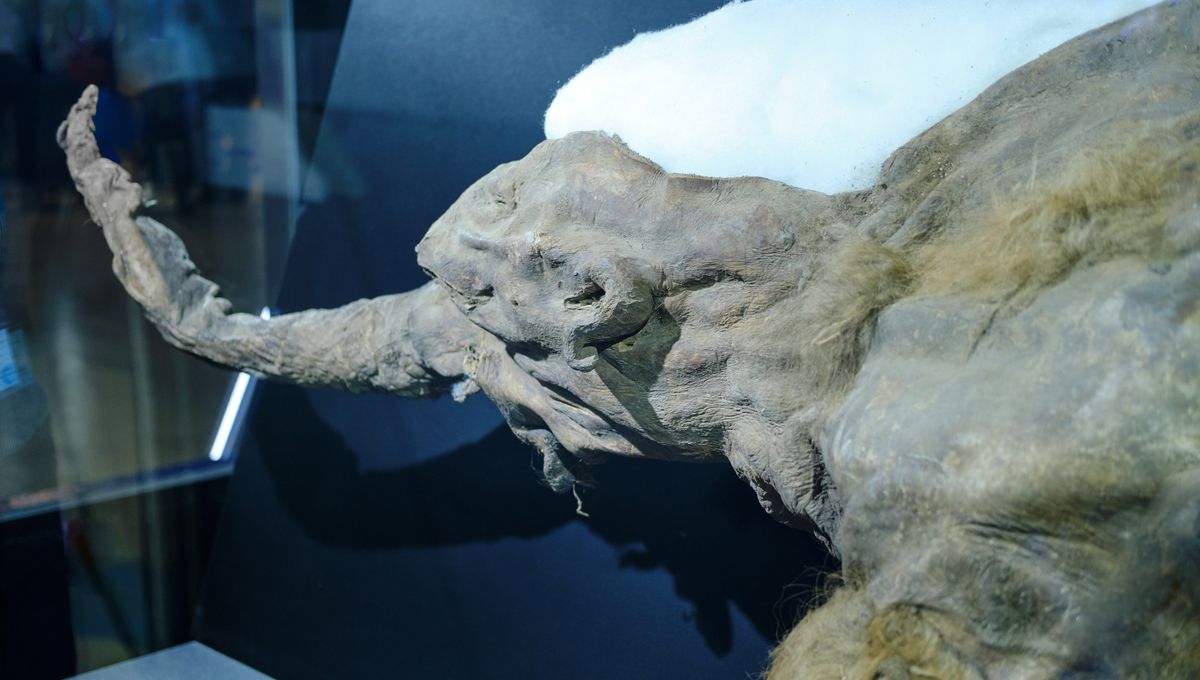
Often hailed as the best-preserved woolly mammoth corpse ever discovered, the body of a young female specimen named Yuka has just yielded a staggering surprise. By analyzing cut marks on the animal’s hide, researchers have now determined that the beast was butchered by humans 39,000 years ago, thus providing the earliest evidence for the presence of people in the Arctic.
Discovered in 2010 in the extreme north of Siberia, Yuka is thought to have been between six and nine years old when she died, possibly as a result of predation by cave lions. Scientists think her corpse froze after falling into a lake, enabling it to remain in pristine condition for almost 40 millennia.
Since its retrieval, Yuka’s incredibly intact body has been identified as a target by researchers seeking to clone and resurrect the woolly mammoth. Amazingly, early studies on the ancient corpse revealed that it still contained liquid blood, while some of the creature’s cell nuclei continue to show signs of biological activity.
Puzzlingly, examinations have also revealed the presence of a meter-long (3.3 feet) incision along Yuka’s back, as well as cut marks around her eye sockets. These findings raise a number of interesting questions, such as whether the slits were produced by animals or humans.
To investigate, the authors of a new study conducted a number of experiments on pieces of cowhide, as well as the skin of another mammoth, while also performing traceological analyses of the incisions on Yuka’s hide. Immediately, the researchers noted that these cuts “have certain traceological characteristics that clearly distinguish them from injuries committed by animals,” thus indicating that they were indeed the work of humans.
The next question, therefore, is whether the incisions were made at the time of Yuka’s death or at a later date. To provide an answer, the study authors made a series of experimental cuts using both prehistoric stone blades and metal knives, before comparing these to the cut marks on the ancient mammoth’s hide.
Reporting their findings, the researchers state that Yuka’s markings “correspond to those obtained in the course of experiments on cutting the mammoth hide with a wide flint blade.” For instance, they found that the animal’s lacerations “do not have very sharp transitions and angles characteristic of the traces from a metal knife.”
The authors therefore conclude that the cuts on Yuka’s skin were made by prehistoric humans using stone tools. They go on to write that, based on the state of the hide’s preservation, “it can be said affirmatively that all the incisions could have [been] made only at a time chronologically close to the death of the animal.”
Taken together, these findings suggest that humans cut up Yuka’s body for meat before she became frozen 39,000 years ago. As such, the cut marks on the creature’s hide represent “the oldest piece of evidence of human penetration into the Arctic zone.”
The study is published in the Journal of Archaeological Science: Reports.
Source Link: 39,000-Year-Old Exquisitely Preserved Mammoth Is Earliest Evidence Of Humans In The Arctic